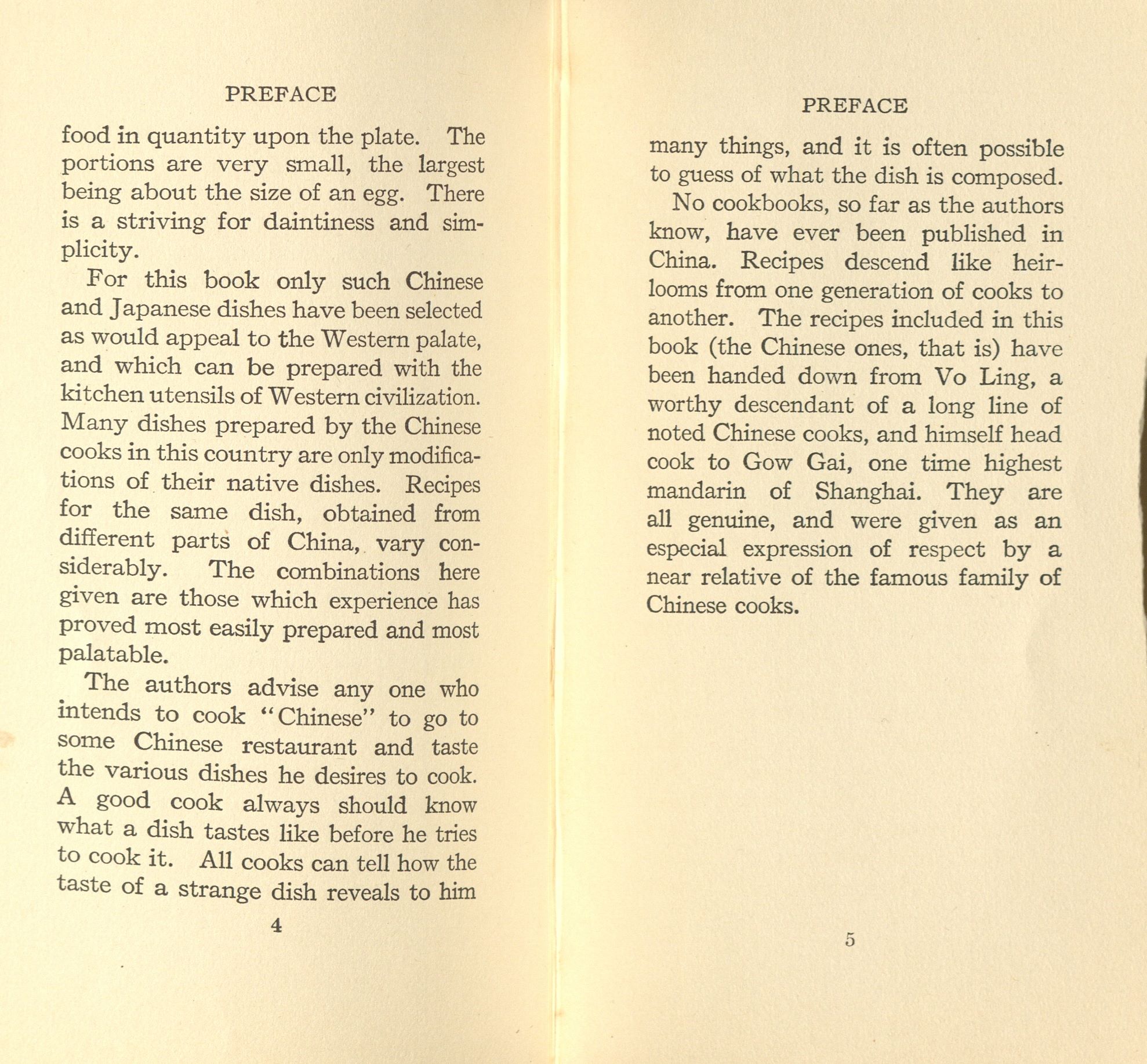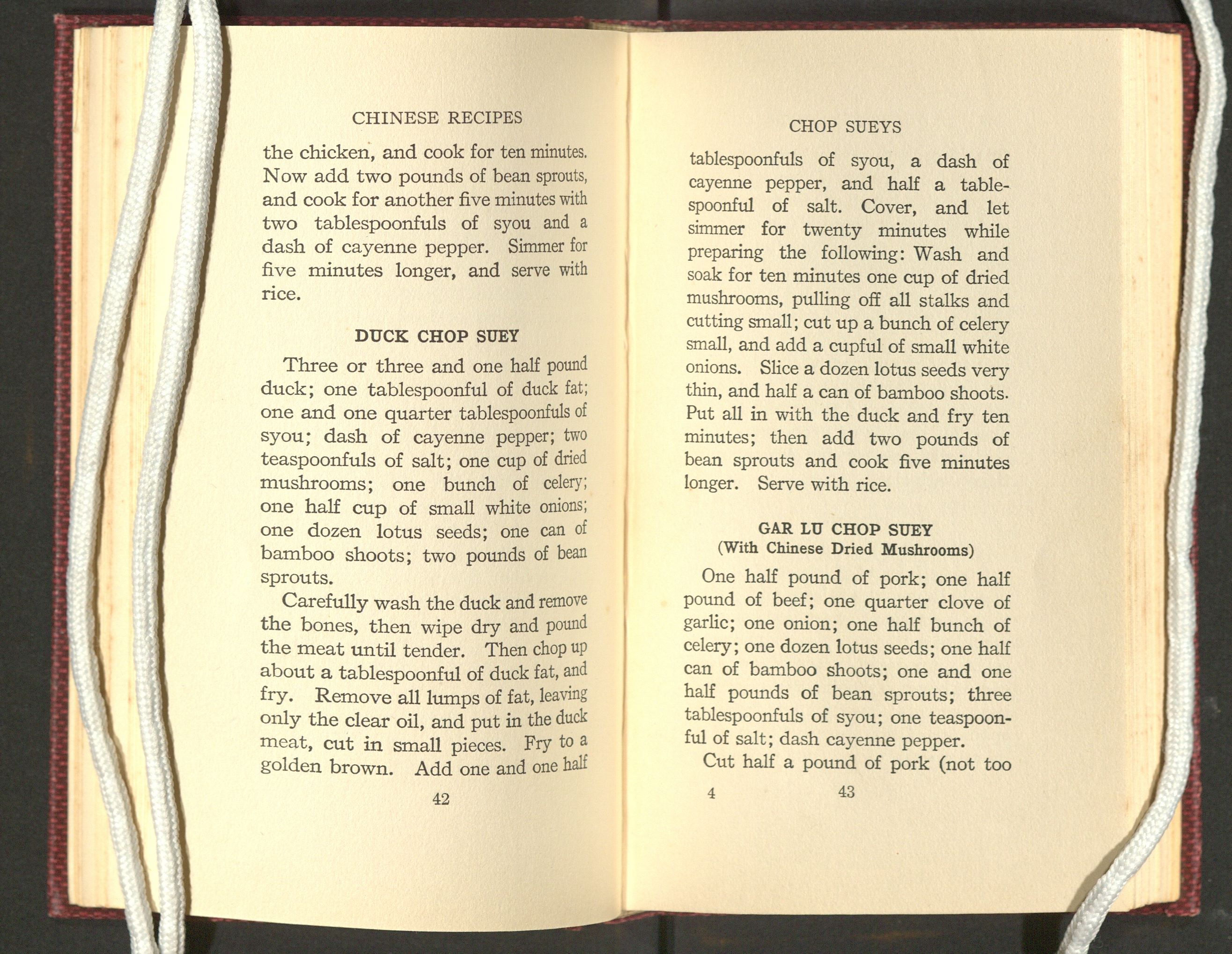Cookbooks can reveal so much about the time in which they were written through their recipes and their authors. For instance, many cookbooks were written for a particular audience, most often women because historically they were the ones cooking or keeping up in the kitchen. Often the cookbooks would expand from just recipes into tips for the household, personal hygiene, or home medicine. This additional information often provided a look into the state of society at the time.
In the 20th century, more and more cookbooks were published that sought to bring cuisines of the world to American housewives. The Chinese-Japanese Cook Book (1914) is an early example of one. It is especially interesting not only because of its content but also because of its authors and its publication during a time period of widespread discrimination against Chinese Americans and Chinese immigrants. The cookbook was written by sisters Winnifred Eaton (Onoto Watanna) and Sara Bosse who were half-Chinese on their mother’s side. Prior to this cookbook Winnifred Eaton was a successful fiction writer but under the identity of Japanese American, using the alias Onoto Watanna. By passing as another ethnic group, she was able to find more success at a time of heightened anti-Chinese sentiment. But in this cookbook, she brings together her real and created identities. Somewhat subtly, the Eaton sisters acknowledge the anti-Chinese sentiment in their preface which says, “There is no reason why these same dishes should not be cooked and served in any American home. When it is known how simple and clean the ingredients used to make up these Oriental dishes, the Westerner will cease to feel that natural repugnance which assails one when about to taste a strange dish of a new and strange land.” This preface imparts a look into what society was like and the view of Chinese immigrants at the time. In some ways, food served as both a way for Chinese Americans to be accepted and also further seen as the “other.” Could Chinese cuisine only be accepted when adapted to the taste of Americans and laden with reassurances that the ingredients were really not so very different?

Preface from Chinese-Japanese Cook Book (1914) by Sara Bosse and Onoto Watanna, published by Rand McNally & Company.
This cookbook raises interesting questions about the concept of authenticity. With no actual connection to her supposed Japanese heritage, can the Japanese recipes be considered authentic? Or is authenticity not present in this cookbook at all? The cookbook states that the food and recipes have been adapted to fit a western palate–which was common in Chinese restaurants too at this time. So instead of looking for authenticity, it may be better to look at this cookbook as a means of ethnic collaboration and the beginning of the distinct identity of Chinese American, or more broadly Asian American. The cookbook is about 120 pages, split into two parts, the first filled with Chinese recipes and the second with Japanese recipes. Each recipe comes with a list of ingredients and instructions but no photos. They also advise the readers to go to a Chinese restaurant themselves before cooking, creating possible avenues of connection.
The Chinese-Japanese Cook Book is available to view in the Special Collections by appointment.

Chinese-Japanese Cook Book (1914) by Sara Bosse and Onoto Watanna, published by Rand McNally & Company.